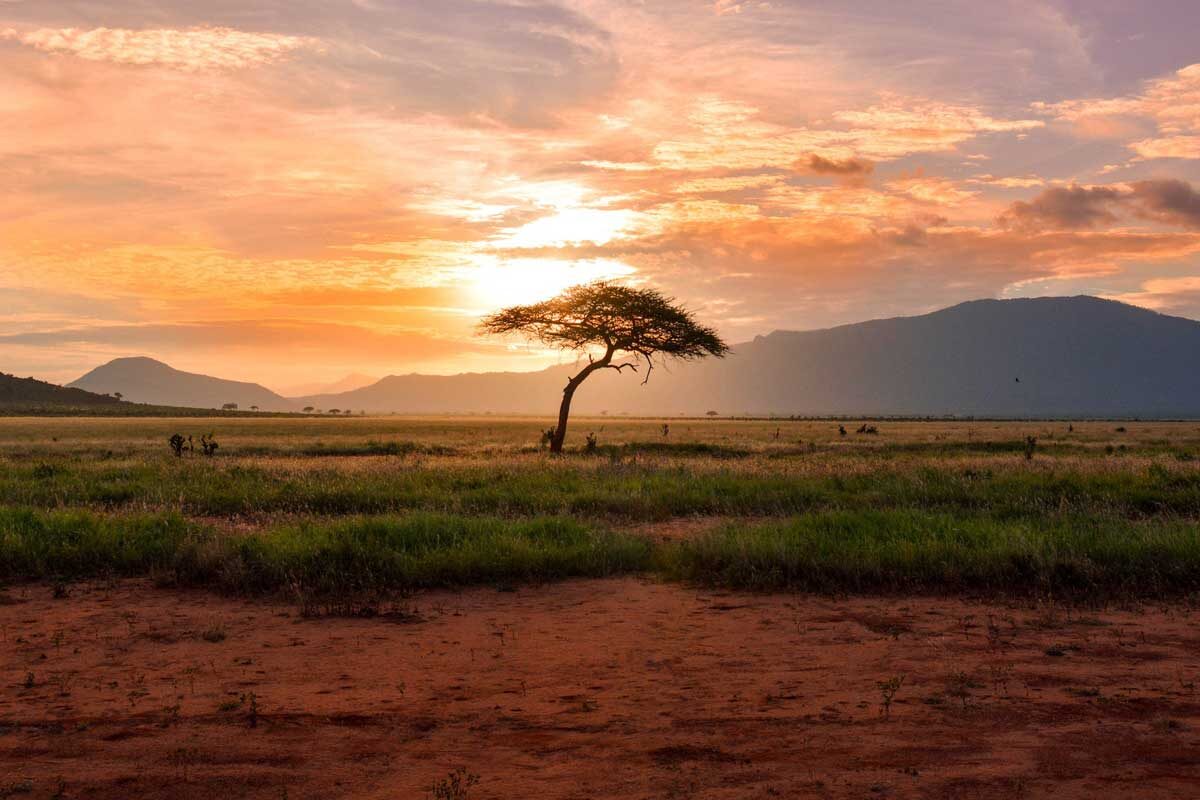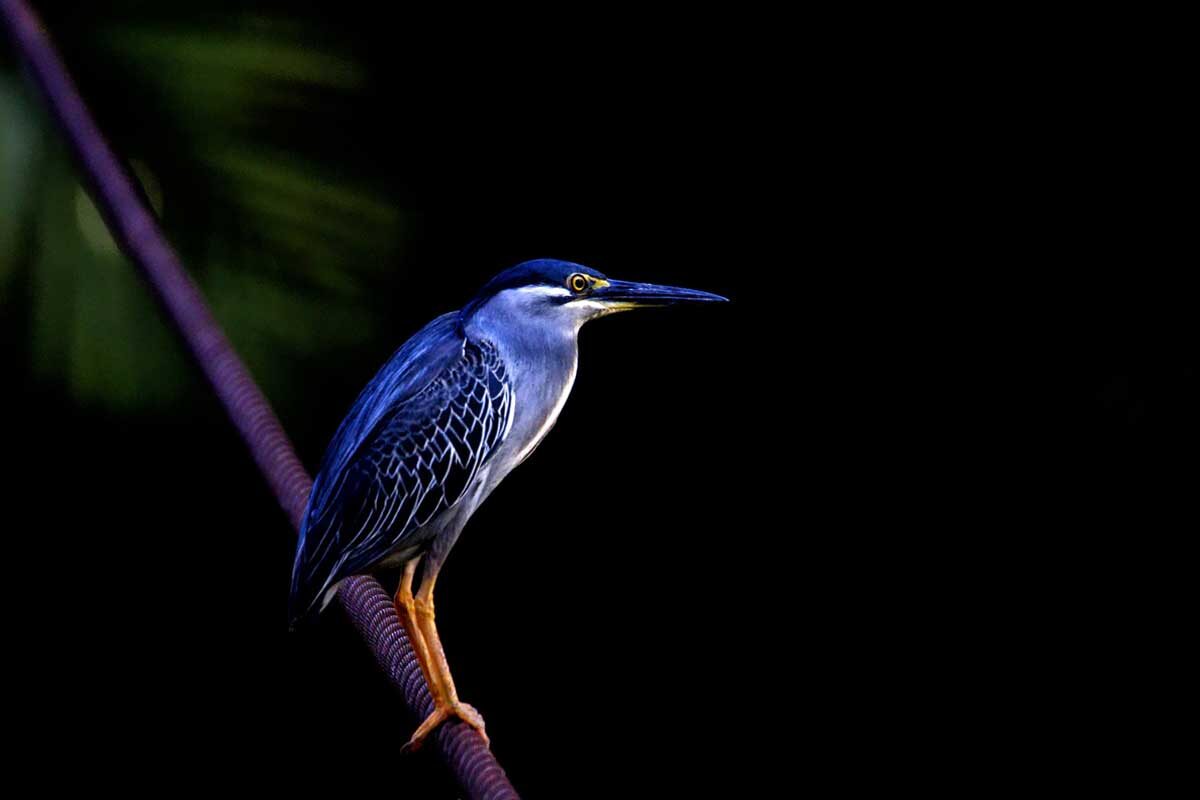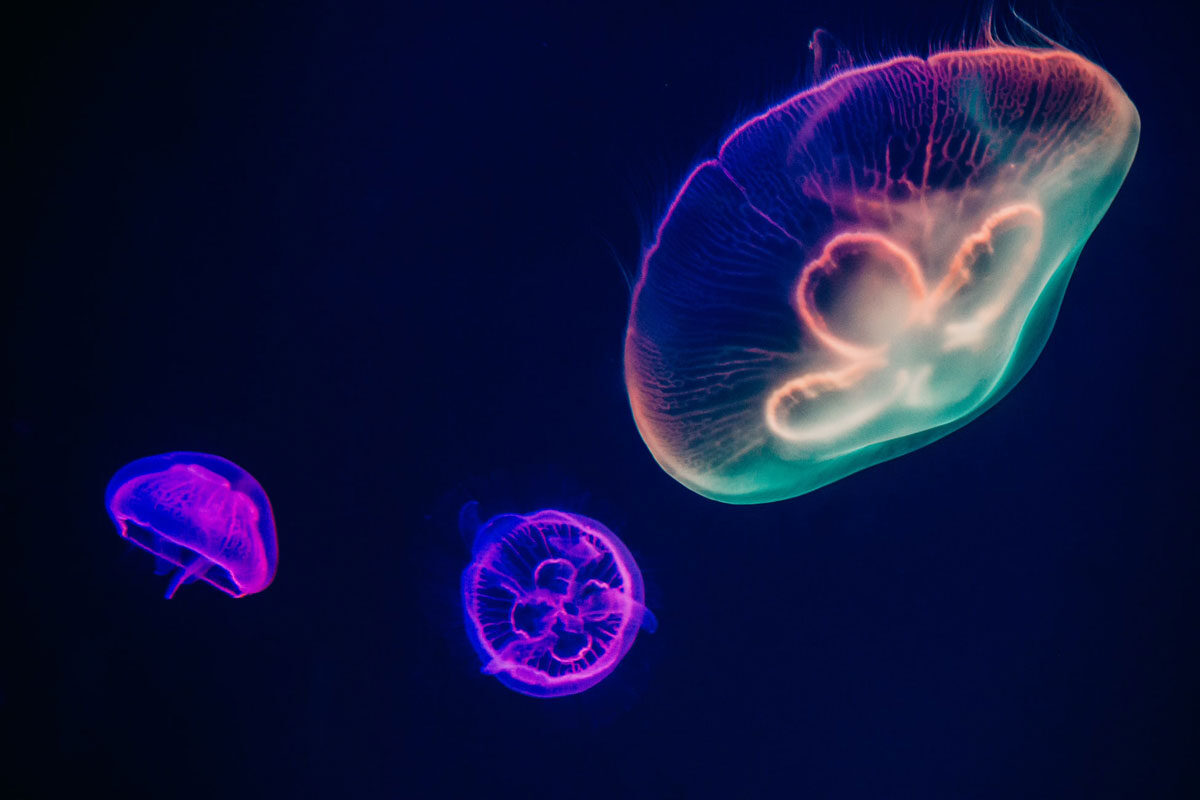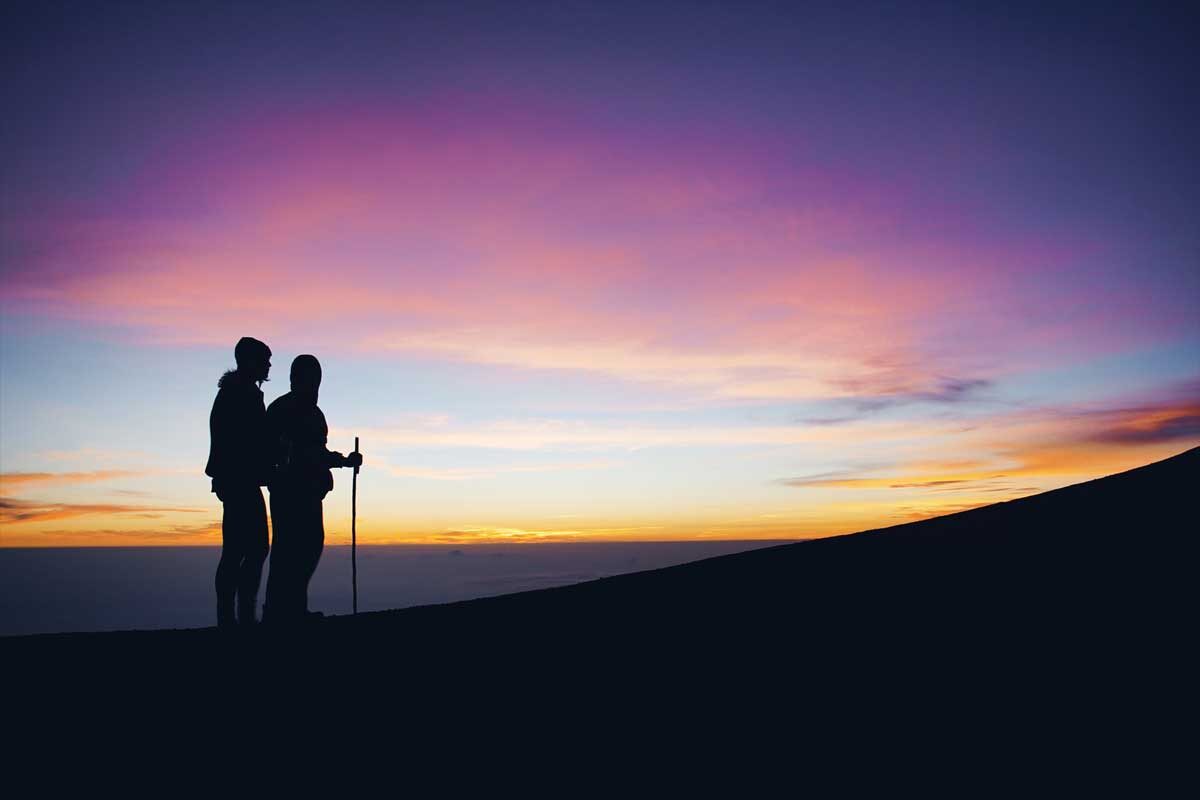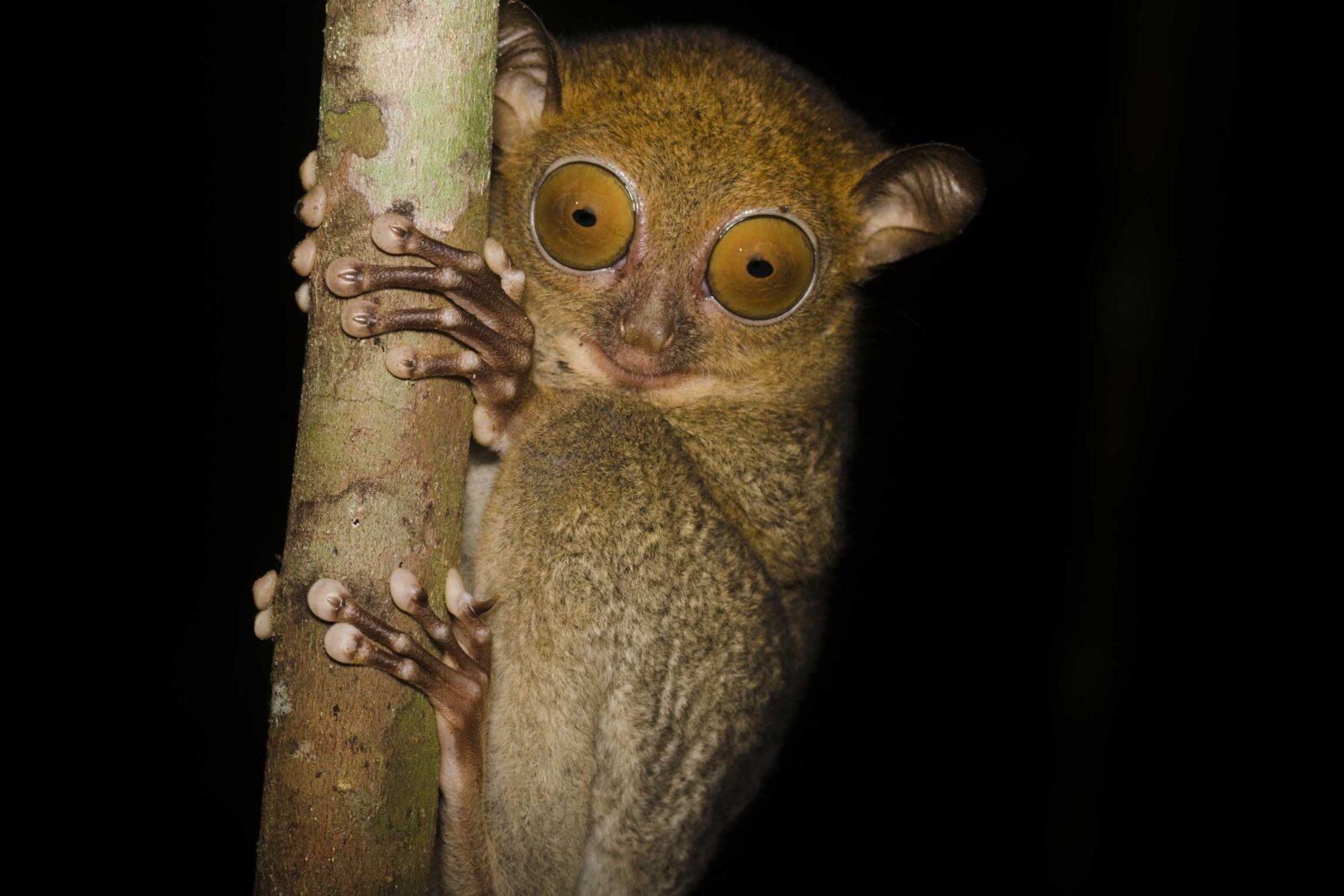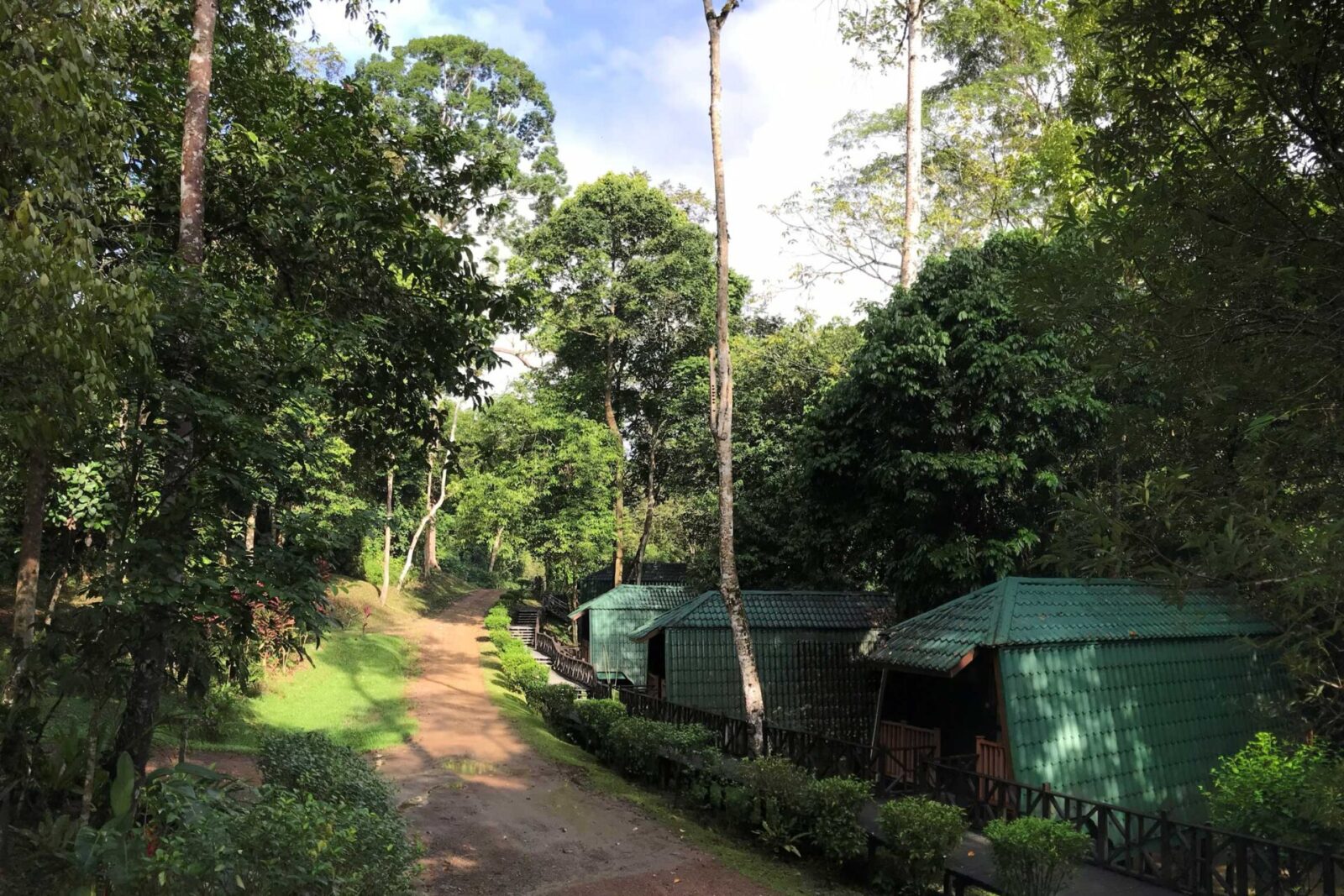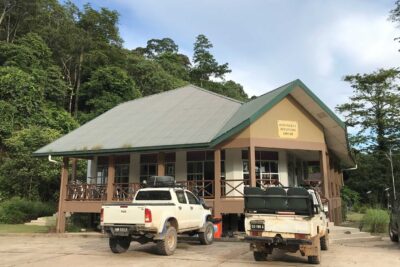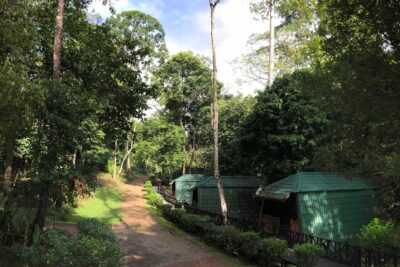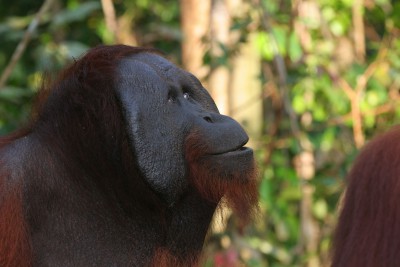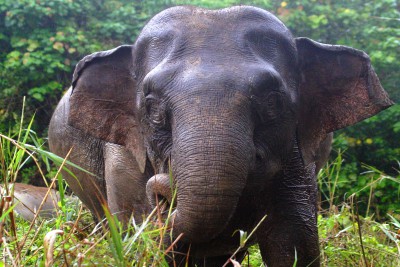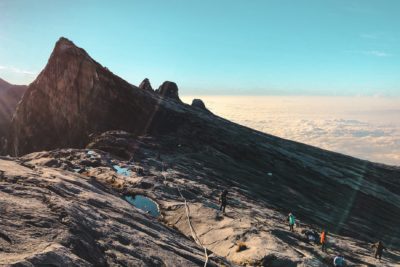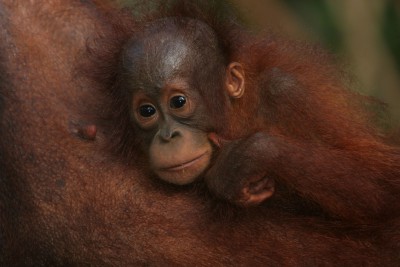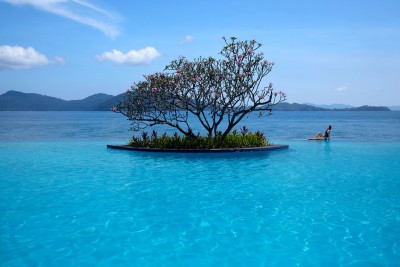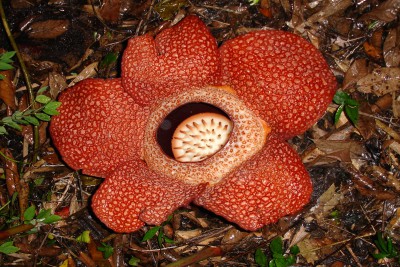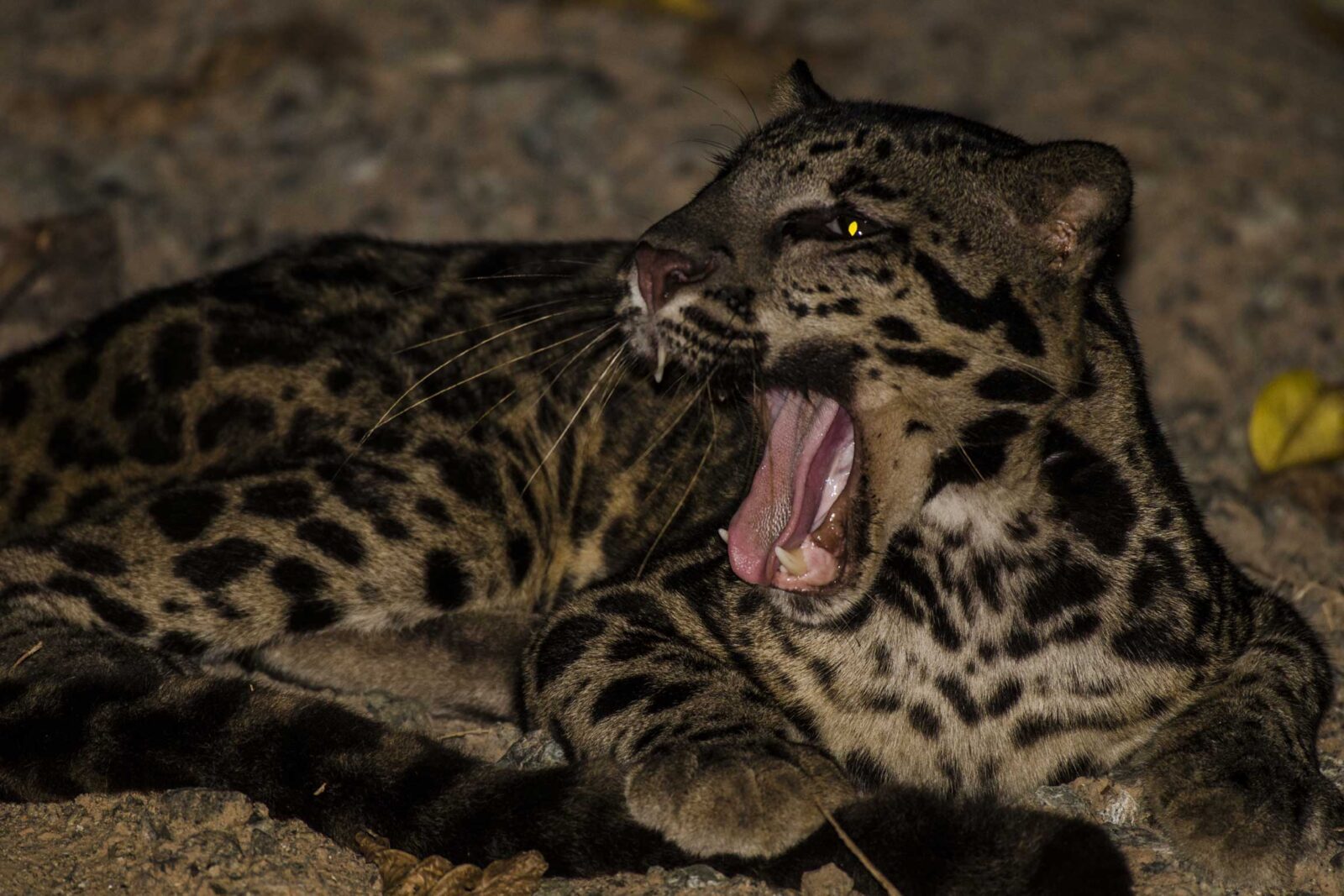
In Search Of Borneo’s Rarest Mammals With Private Guide
Tour Introduction
This is a privately-guided tour for real mammal enthusiasts. As well as Borneo’s iconic headline species including orang-utans and proboscis monkeys, this trip delves deep into some of Borneo’s less visited forests to find some of the real rarities of the island. Many of these are more active at night, so you will spend a large proportion of your trip on night drives and night walks. However, your efforts could be rewarded of sightings of some of the world’s rarest and most elusive species such as pangolins, sun bears, rare primates and wild cats including leopard cats, marbled cats and even the famed clouded leopard. As with all wildlife, you can take no sighting for granted but you are sure to see plenty of wildlife and have a few adventures along the way.
You begin your trip with an overnight at Sepilok, home to the famed orang-utan and sun bear centres. If you wish, you can head to the centres for some easy viewing of the rehabilitated animals; or you could head to the nearby Rainforest Discovery Centre to explore the primary rainforest to begin your search for rarities. First on your list could be the giant red flying squirrel (Petaurista petaurista) which is fairly common in the reserve and can often been seen from the canopy walkway here. They are often active in the late afternoons emerging from their nesting trees and gliding from tree to tree exploring the forest. Here you can also see the smaller Prevost’s squirrel (Callosciurus prevostii) plus a large number of birds including the Bornean bristlehead. If still feeling active, you will return to the Rainforest Discovery Centre for the first of your nocturnal walks. You can expect to see more flying squirrels plus the chance of seeing some very rare nocturnal primates: the Philippine slow loris (Nycticebus menagensis) and the western tarsia (Cephalopachus bancanus).
Next, you would venture overland (the last section by 4×4 on very poor roads) deep into the heart of Sabah to the Deramakot Forest Reserve. This is a huge 55,507 hectare rainforest reserve managed by the Sabah Forestry Department for conservation and sustainable forest management. It is also quickly gaining a reputation for its exceptional sightings of some of Borneo’s rarest animals. Daytime sightings frequently include Bornean orang-utan (Pongo pygmaeus), the Bornean agile gibbon (Hylobates albibarbis), maroon langur monkey (Presbytis rubicunda), silvery langur monkey (Trachypithecus cristatus), two species of macaque and a wide range of squirrels, shrews, birds and snakes. Rarer daytime mammal encounters could include the Borneo pygmy elephant (Elephas maximus), banteng wild ox (Bos javanicus) and the very rare and beautiful Sabah grizzled langur (Presbytis sabana).
Deramakot is particularly known for its long night drives that can reveal a plethora of nocturnal mammals. Common sightings include Malay civet (Viverra tangalunga), common palm civet (Paradoxurus hermaphroditus), striped palm civet (Arctogalidia trivirgata), giant red flying squirrel (Petaurista petaurista), Thomas’s flying squirrel (Aeromys thomasi), Philippine slow loris (Nycticebus menagensis), western tarsier (Cephalopachus bancanus), Sunda colugo (Galeopterus variegatus), Bornean bearded pig (Sus barbatus) and a large number of deer (mostly samba and muntjac). Much rarer nocturnal sightings could include sun bear (Helarctos malayanus), Sunda pangolin (Manis javanica), binturong (Arctictis binturong), otter civet (Cynogale bennettii) and the Sunda stink badger (Mydaus javanensis).
Deramakot is also gaining a reputation for its wild cat sightings. Strikingly beautiful leopard cats (Prionailurus bengalensis) are commonly seen along the forest verges and this is one of the best places in the world to see both marbled cat (Pardofelis marmorata) and the Sunda clouded leopard (Neofelis diardi). Both are rare and elusive but many people have been successful here in the past. Deramakot is also thought to be home to a small population of the Bornean bay cat (Catopuma badia) but its elusive nature and diurnal habit has made it almost impossible to spot.
The accommodation at Deramakot is pretty simple and you can find yourselves spotlighting through the night in order to seek-out the rarer creatures here, so it is not to everyone’s tastes. However, as you will have your own vehicle and private guide, you will be able to fully dictate your own programme of activities and timings here. Perhaps just have day drives, just night drives or a mixture of the two. Whatever you choose, you are sure to have some fantastic wildlife encounters along the way.
Moving on from Deramakot, you will next head to the famed Kinabatangan River to spot some of the wildlife of the forest and river. Chances of orang-utan and proboscis monkey (Nasalis larvatus) are both high plus you would have another chance to spot Borneo pygmy elephants. Once more, you will venture out at night to spot nocturnal species with good chances of seeing Sunda colugo on night walks, plus civets and resting mammals on night cruises – usually accompanied by a dazzling firefly display.
Your final destination is Tabin, a large rainforest reserve bordered by palm oil plantations. The reserve was home to Malaysia’s last surviving Sumatran rhinos (Dicerorhinus sumatrensis) firstly in the wild and then as part of a captive breeding population. Now thought by many to be extinct in Malaysia, there are some that hope that a few individuals may still be clinging-on in some far corner of the reserve. The reserve is home to large numbers of other rainforest animals with orang-utans, Borneo pygmy elephants and a range of langurs and macaques. There is a habituated population of Bornean agile gibbon (Hylobates albibarbis) which often keeps close to the lodge plus a mud volcano which acts as a natural salt lick attracting birds and mammals out of the forest, especially at night.
Many of the forest dwellers raid the neighbouring palm plantations meaning that the reserve supports higher than usual populations of monkeys, hornbills, bearded pigs, civets and forest rodents. Consequently, it also has a good reputation for its predator sightings. Leopard cats are commonly seen on night drives here along with high numbers of flying squirrels, civets, colugos and slow loris. Tabin is also another stronghold of the clouded leopard and you will have private night drives in the final hope of seeing one before you leave.
During this trip you will be on the hunt of some of South East Asia’s rarest and most secretive creatures and every trip is sure to have its own highs and lows. You can never be exactly sure of what animals you will see but you can bet that it will be packed full of wildlife with some incredibly rare sightings along the way.
Like so many other tropical forests around the world, the forests of Kinabatangan, Tabin and Deramakot are all in an extremely precarious position: being encroached by palm oil plantations and in the sights of loggers. By visiting these areas you are creating a sustainable source of income through tourism and you will be giving a credible alternative to these destructive practices. Therefore, you can take great comfort in knowing that as well as enjoying an incredible wildlife adventure, your visit will be directly protecting the extremely rare and threatened species you have come all this way to see.
Full Itinerary
Arrive Sandakan Airport (SDK). Met by guide and drive (approx. 30 mins) to Sepilok. Visit the Rainforest Discovery Centre to walk the canopy walkway and explore the botanical garden. Activity is usually greatest in the late afternoon with great birdlife and occasionally orang-utans moving through the forest. Return to the centre for a night walk when flying squirrels, tarsiers and slow loris are sometimes seen.
Staying at Sepilok Nature Lodge. Includes Dinner.
Perhaps rise early and return to the Rainforest Discovery Centre for some morning wildlife watching. Enjoy a late breakfast at your lodge, then drive (approx. 2 hours) to the town of Telupid for lunch at local restaurant. Pickup for the 2-hour journey to Deramakot Forest Reserve. Four-wheel drive vehicles are used for this stretch of the journey on approx. 70 km of sometimes bumpy gravel tracks. Upon arrival check-in to the park-style chalet accommodation. Then go on a forest walk near the base station. After dinner go on 4×4 night safari to look for wildlife. After approx. two hours of ‘spot lighting’ and searching for wildlife return to the lodge.
Staying at Deramakot Forest Reserve. Includes All Meals.
The programme for the next few days will be agreed between yourselves and your guide depending on your interests and the latest sightings but this will usually involve a series of game drives and wildlife walks through the forest, day or night. Game drives during the day often encounter orang-utans, gibbons, langur monkeys (usually maroon lagurs but occasionally silvery langurs and the very rare Sabah grizzled langur), macaques, deer, hornbills and a wide range of other birds. Common night sightings include civets (most commonly Malay civet, common palm civet and striped palm civet), flying squirrels (giant and Thomas’s), leopard cats, deer (mostly samba and muntjac), slow loris, colugo (flying lemur) and bearded pigs. Less common sightings include marbled cat, sun bear, otter civet, binturong and pangolin. This is also now regarded as arguably the best place in the world to see the rare and highly elusive Sunda clouded leopard. Sightings are by no means guaranteed and you have to work hard at these but many people have been successful in the past.
Staying at Deramakot Forest Reserve. Includes All Meals.
Day/night exploration of Deramakot
Staying at Deramakot Forest Reserve. Includes All Meals.
Day/night exploration of Deramakot
Staying at Deramakot Forest Reserve. Includes All Meals.
Day/night exploration of Deramakot
Staying at Deramakot Forest Reserve. Includes All Meals.
Day/night exploration of Deramakot.
Staying at Deramakot Forest Reserve. Includes All Meals.
Day/night exploration of Deramakot.
Staying at Deramakot Forest Reserve. Includes All Meals.
Drive (approx. 2 hours) back to Telupid. Change cars and drive (approx. 3hrs) to Sukau. Take boat (1.5hrs) down the Kinabatangan River (stopping to watch wildlife en route). Check-in to your lodge and head out on an afternoon river cruise in search of wildlife. If weather permits, stay out until nightfall to see nocturnal animals and a stunning firefly display.
Staying at Kinabatangan Wetlands Resort. Includes All Meals.
Early morning cruise to observe more wildlife and birdlife. Cruise to the nearby ox-bow lake to see forest and lake wildlife including large numbers of proboscis monkeys, macaques and with luck wild orang-utans and elephants. Return to the lodge for rest and lunch. Explore the resort grounds for interesting plants, insects and birds. Late afternoon river cruise to spot large numbers of primates, birds and other wildlife. After dinner, there will be a night walk along the lodge boardwalks looking for nocturnal wildlife like the diminutive mouse deer, roosting birds and the extraordinary-looking colugo (“flying lemur”).
Staying at Kinabatangan Wetlands Resort. Includes All Meals.
Transfer by boat up the Kinabatangan River to the village of Sukau for road transfer (2 hrs) to Lahad Datu and continue by 4x4 (2 hrs) to the Tabin Wildlife Reserve in time for lunch. In the afternoon, enjoy your first excursion in the private reserve. Followed by a private night drive or night walk. This is a particularly good area for cats with leopard cats frequently seen at night. This is also one of the world’s best places to glimpse the elusive clouded leopard, however, sightings are still very rare.
Staying at Tabin Wildlife Lodge. Includes All Meals.
Day of excursions in the reserve. With a protected forest area of 120,500-hectares, Tabin contains several highly endangered species of mammals and birds. Today’s itinerary to be decided with your guide. Perhaps visit the Lipad Mud Volcano that serves as a mineral salt lick for wildlife. After trekking through the jungle for twenty minutes, arrive at an elevated clearing. This is a mud volcano, rich in minerals and known to be frequented by deer, bearded pigs, elephants and birds. Try to identify the multitude of animal footprints here. An observation tower is perfectly positioned for an aerial view of the mud volcano and any passing animals, as well as the surrounding forest where birds such as hornbills are commonly sighted. Evening private night drive in search of Tabin’s nocturnal wildlife.
Staying at Tabin Wildlife Lodge. Includes All Meals.
Day of excursions in the reserve. Evening private night drive in search of Tabin’s nocturnal wildlife.
Staying at Tabin Wildlife Lodge. Includes All Meals.
Enjoy another morning of excursions in the Tabin Wildlife Reserve. Transfer to Lahad Datu Airport (LDU) and board flight home.
Includes Breakfast.
Tour Accommodation
Overview
Beautifully set in lush grounds within walking distance of the lowland rainforests of Kabili-Sepilok Forest Reserve with it’s renowned orang-utan centre, sun bear centre and rainforest discovery centre.
The spacious chalets at Sepilok Nature Lodge have private facilities and are tastefully decorated with local wood and handmade textiles. The restaurant serves a good selection of local and more international food and there is free Wi-Fi available here.
The chalets are surrounded by wildlife-filled gardens which would take half a day to appreciate fully and include a natural lake, and orang-utans can sometimes be seen in the adjacent forest. The lodge offers guided walks through the reserve in the early morning and at night when orang-utans, flying squirrels and slow loris are often spotted.
Each of the 60 chalets has twin or double beds, air-conditioning, private bathrooms with hot water, TV and mini bar. Most chalets also have a private veranda that overlooks the lush gardens or the peaceful lake.
The famous Sepilok Organ-Utan Rehabilitation Centre and the new Sun Bear Centre are only a 5-minute walk from the resort. It is approximately 20 minutes to the Rainforest Discovery Centre.
Swimming Pool
Air Conditioning
Rooms
Facilities
Rooms with private hot water bathrooms, verandas, free Wi-Fi, ceiling fans, satellite TV, laundry service and private veranda.
Local Wildlife
Orang-utans, long-tailed macaques, slow loris, red giant flying squirrels, mouse deer, hornbills, flying lizards and water monitor lizards.
Optional Activities
The Sepilok Orang-Utan Rehabilitation Centre is only a 5-minute walk from the resort, and it is approximately 20 minutes to both the Rainforest Discovery Centre and Proboscis Monkey Rescue Centre.
Overview
The Deramakot Forest Reserve is a large government-managed rainforest reserve with 10% of the forest set aside for conservation and 90% set aside for reduced-impact logging. The logging here is carried-out in a selective way leaving behind a patchwork of undisturbed forest interspersed with small patches of regrowth. Ironically, this diverse patchwork of forest types creates the perfect conditions for wildlife and Deramakot is quickly emerging as one of Sabah’s best wildlife watching destinations. Over time, it’s hoped that the income generated by wildlife tourism will start to rival that generated by logging and help to preserve this important rainforest area for generations to come.
Game drives during the day often encounter orang-utans, gibbons, langur monkeys (usually maroon lagurs but occasionally silvery langurs and the very rare Sabah grizzled langur), macaques, deer, hornbills and a wide range of other birds. The area is particularly gaining a reputation for its night drives where a range of nocturnal animals are often seen. Common sightings include civets (most commonly Malay civet, common palm civet and striped palm civet), flying squirrels (giant red and Thomas’s), leopard cats, deer (mostly samba and muntjac), slow loris, colugo (flying lemur) and bearded pigs. Less common sightings include marbled cat, sun bear, otter civet, binturong and pangolin. This is also now regarded as arguably the best place in the world to see the rare and highly elusive clouded leopard. Sightings are by no means guaranteed and you have to work hard at these but many people have been successful in the past.
Swimming Pool
Air Conditioning
Rooms
Facilities
Deramakot is a working forestry station with a wide range of accommodation options for rangers, researchers and volunteers. Most tourists are accommodated in the four guest chalets each of which is split into four bedrooms with a shared central seating area with water cooler. The bedrooms are small, functional and pretty comfortable with en suite bathrooms, hot water showers and air-conditioning. The Deramakot restaurant is large and canteen-like with private cooks usually brought in to provide simple local meals. There is no WiFi and very little cell-phone reception at the station. There are a few overgrown trails to follow or, alternatively, the approach road provides safe walking through the forest allowing for independent wildlife spotting during your spare time. Most of your time here is spent on day or night drives through the rainforest.
Local Wildlife
Deramakot is rich in wildlife with 75% of Sabah’s mammal species found within its 55,507 hectares of mixed dipterocarp forest. Common sightings at Deramakot include orang-utans, gibbons, langur monkeys (usually maroon langurs but occasionally silvery langurs and the very rare Sabah grizzled langur), macaques, deer, hornbills and a wide range of other birds. Deramakot night drives reveal civets (most commonly Malay civet, common palm civet and striped palm civet), flying squirrels (giant red and Thomas’s), leopard cats, deer (mostly samba and muntjac), slow loris, colugo (flying lemur) and bearded pigs. Rarer sightings can include Borneo pygmy elephants, Banteng (wild cattle), western tarsier, marbled cat, sun bear, otter civet, binturong and pangolin. Deramakot is also now regarded as arguably the best place in the world to see the rare and highly elusive clouded leopard.
Optional Activities
Day and/or night drives (a total of seven hours a day) are usually included in your stay here. You guide can also take you for day or night walks on the trails should you prefer this.
Overview
Set in a remote forest reserve near an internationally-important wetland, the Kinabatangan Wetlands Resort offers access to an unspoilt region populated by local tribespeople and a wide array of wildlife. A raised walkway leads between the buildings at the resort where ten tastefully designed twin cabins provide luxurious air/conditioned accommodation.
Spacious and bright, they have dark, wooden floors, white linens and bright bed throws and cushions in locally-made fabrics. Each has an outdoor seating area where many of the animals of the wetlands (deer, wild pigs etc) can be seen. Other facilities include an open dining area, a library and a lounge with cane and bamboo sofas. The food is good and the staff are friendly and knowledgeable about the area. The local freshwater swamps and mangrove forest are home to orangutan, langurs and rhinoceros hornbill along with a diverse mix of tropical plant life. Activities include day and night river safaris, jungle walks and visits to the local Orang Sungai people.
Swimming Pool
Air Conditioning
Rooms
Facilities
All rooms are equipped with fan, private bathroom with hot & cold shower, shampoo, soap and toilet papers. Free Wifi internet access within restaurant area, Laundry service is available at a fee. The resort has its’ own 24 hours security personnel. 24 hours electricity is supplied by solar panels and a generator.
Local Wildlife
The local freshwater swamps and mangrove forest are home to orangutan, langurs and rhinoceros hornbill along with a diverse mix of tropical plant life. Deer and wild pigs can be seen around the boardwalks by day. At night your can see nocturnal wildlife like the diminutive mouse deer, roosting birds and the extraordinary-looking colugo
Optional Activities
Boat excursions, village visits and night walks are all included in the price here.
Overview
A rainforest haven in a sea of palm oil plantations, the 120,500-hectare Tabin Wildlife Reserve represents a refuge for some of Borneo’s rarest mammals and birds.
It was home to one of the last wild rhino populations in Sabah plus was more recently the base for the rhino breeding programme. Hopes are that a last few rhinos cling-on somewhere in the reserve but this is becoming increasingly less likely signalling that the species is now most likely extinct in the whole of Sabah. However, the reserve still represents a beacon of hope to some of Borneo’s rarest creatures. It is one of the release sites for habituated orang-utans and is one of the last strongholds of the secretive Borneo pygmy elephant. Tabin is particularly known for its cat species with sightings of the diminutive leopard cat being common during night drives and the rare clouded leopard being sighted on occasion.
An active mud volcano (with observation platform) creates a natural saltlick for forest mammals and the mix of forest types (palm, secondary and small patches of primary) makes it a hotspot for birdwatchers with possible sightings of all eight of Borneo’s hornbill species plus rarities including Storm’s stork and the secretive blue-headed pitta. The resort has 20 charming wooden cabins dotted along the river and running up the hill behind. Activities include walking the forest trails, hikes to nearby waterfalls, mud volcano visits, morning birdwatching and night drives to spot many of the nocturnal species.
Swimming Pool
Air Conditioning
Rooms
Facilities
The accommodation at the Tabin Wildlife Resort is split between 10 “River Cottages” dotted along the Lipad River and 10 “Hillside Cottages” running up the hill behind the lodge. All cabins have an outdoor veranda/balcony, are built from local wood and the size and standards of each are similar. The Hillside Cottages involve quite a few steps to get to but have more light and slightly better views. The River Cottages are closer to the main buildings and involve an easier walk but are a little darker than those on the hillside. All rooms benefit from air-conditioning and hot water showers. The main central building houses the restaurant, bar and small library. Food is usually very good here and is usually served buffet style. There is also a small spar offering a range of treatments, many using mud from the nearby mud volcano.
Local Wildlife
The Tabin Wildlife Reserve is home to many of Borneo’s rainforest species including Borneo pygmy elephants and Banteng (wild ox). It was also home to some of Sabah’s last surviving wild rhinos and more recently a rhino breeding programme. Hopes are that wild rhinos may still cling on in some of the more remote areas of the reserve but many fear that rhinos are now extinct here and in Sabah as a whole. Many of the rainforest animals raid the nearby palm oil plantations meaning that the forest here supports higher than usual numbers of animals such as the bearded pig, macaques and hornbills. This is best revealed in the night drives which can be particularly rewarding with regards to civets, flying squirrels and cat species. Leopard cats are common here and this is one of the last strongholds of the fabled clouded leopard although sightings are still rare. Primate numbers are also high here, there is a habituated troupe of gibbons plus this is one of the release sites for rescued and rehabilitated orang-utans. The mix of forest types also makes it an excellent area for birding with a birdlist of over 230 species. Here you can see all of Borneo’s eight species of hornbill including the much sought after rhinoceros, white-crowned and helmeted hornbills. Other rare bird species include Storm’s stork, green iora, white-chested babbler and the secretive blue-headed pitta, black and crimson pitta and the giant pitta.
Optional Activities
A programme of rainforest hikes, volcano visits and night drives is usually included in your stay here.
Route Map
Departure Dates
Travel Information
Are International Flights Included?
No. Please contact us for a quote if required.
Best Visited:
March to October
Are you ATOL Registered?
Yes. This means we are legally able to book your international flights in conjunction with your ground arrangements so you can book with us with complete confidence. Read more about our ATOL license here.
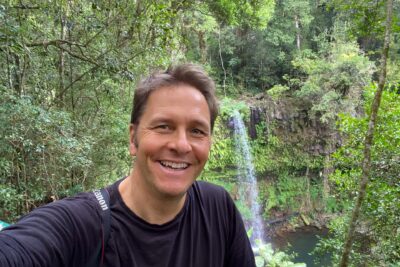
Jonathan Morris
Area Specialist
Photography on the night drives can be a real challenge with subjects often being out of range of flash photography. The guides use powerful spotlights but it’s often difficult getting your camera settings right. It’s worth experimenting with a range of ISO settings and shutter speeds to find a combination that works best for the conditions. Best to take time to perfect this during some of the commoner sightings, so that everything is set perfectly for your rarer encounters.
If you have any questions regarding this Tour, please feel free to contact me on +44 (0)1803 866965
This was our 11th consecutive wildlife trip with Reef and Rainforest, that in itself speaks volumes. As our interest in the natural world has steadily increased so have our demands, particularly with regard to itinerary planning. Reef and Rainforest have never let us down, delivering some truly magical experiences and wildlife sightings over the years. This trip was one of the best, we observed well 4 out of 5 cat species, 9 out of 10 primates and 6 out of 8 Hornbills. In all 44 species of mammals were recorded and numerous birds and reptiles. Be prepared to go nocturnal to get the best out of your visit, Borneo is a truly magical island to visit with some wonderful and rare wildlife. The accommodation throughout the trip was good, the guiding was exceptional and the food was of a very high standard. Thank you, Jonathan, and all at Reef and Rainforest, we look forward to hopefully travelling with you again in 2025.
